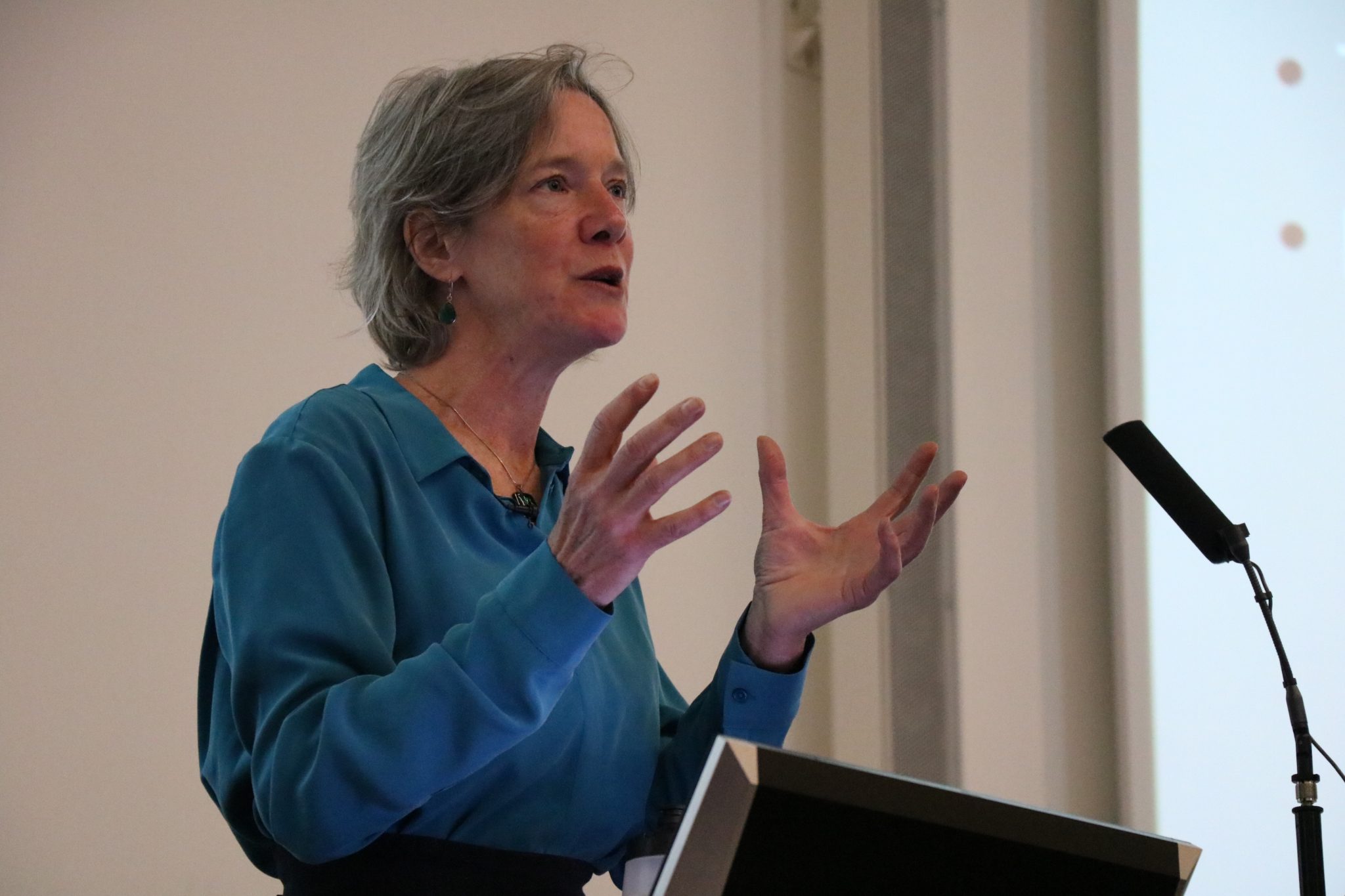We were pleased to welcome Cathy Dean, CEO of Save the Rhino International, to give this year’s annual DICE lecture. Held in Woolf College, Cathy’s talk was entitled ‘The appliance of science: thorny issues in rhino conservation.’ The current rhino poaching crisis has affected conservation programmes in varied and unexpected ways, often suffering at the expense of emergency fire-fighting responses.
Cathy began by describing the role that science plays in informing decisions in conservation planning and discussing the strategies that Save the Rhino International deploy. One of the key functions of an NGO, she explained, was in providing the link between interested members of the public, stakeholders and donors, and the researchers and scientists on the ground, whilst articulating the thorny issues surrounding rhino conservation such as deciding what merits further research.
The role of technological exchange and innovation was also discussed, particularly in the development of synthetic rhino horn both as an overt alternative and covert imitation. Whilst many benefits present themselves, the manifold disadvantages were quickly highlighted by Dean: with overt alternatives, there is a danger that the product may serve to reinforce acceptability of natural horn alongside a more perverse attraction for consumers looking for the ‘real thing’; with covert imitations, the substantial risk is that traders may rapidly learn how to differentiate natural horn from synthetic in the trade chain, as they do already with fake horn, thereby protecting the high value of the ‘real thing’. Dean argued that tried-and-tested techniques are more effective in rhino conservation: better patrolling; the purchasing and maintenance of good field equipment; researchers and field assistants being paid well; and dedicated legal support for cases that are brought to trial in an effort to stop poachers getting away cleanly.
Another point that Dean was keen to make clear was that conservation must focus on measuring what works: it is not enough to simply embark upon and deliver a project, but to monitor its effectiveness throughout and to learn from any mistakes.
In an age where ‘fake news’ has become something of a buzz-word, Dean was cautionary in describing the role that the media play in escalating any perceived crises in rhino conservation. She cited as an example the misconception that people have traditionally used rhino horn as an aphrodisiac, a lazy piece of reporting that has been so widely repeated that people in Vietnam have recently started using it for that purpose. However, these prurient column inches overlook the main factors driving the illegal rhino horn trade and serve to reinforce false beliefs about the substance’s powers. Perhaps most incisively, Dean gave an account of the supply chain of media interest to the value of rhino horn: when the press talks about the high numbers of rhino poaching that are occurring in tandem with the notion that the price of horn is high, the message that’s being sent to producers and consumers is that it’s both easy to obtain horn and that there’s money to be made in it.
As reportage continues along these alarmist lines, with increasing numbers of rhino populations reportedly going extinct (which will only increase market investment and the price of horn), the role of the NGO must continue to provide balanced information through targeted research, public engagement and a rhetoric of sustainability.
Report by James Kloda.

